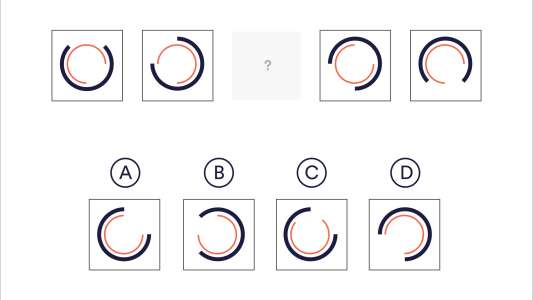Inductive reasoning tests are popular with employers looking for candidates with logic, a natural aptitude for problem-solving and the ability to keep calm under pressure.
Unlike most tests, which focus on a candidate’s skill with words and numbers, the inductive reasoning test requires you to work with shapes, patterns and images, to show your ability to solve puzzles.
The test can be challenging if you haven’t encountered it before. That’s why we’ve put together our top five tips and tricks to help you prepare.
Step 1: Familiarise yourself with the test format
First, it’s important to get to know the format of the inductive reasoning test so you’re not presented with any surprises on the big day.
Ensure you know the duration of the test and roughly how many questions you’ll need to answer in this time. This will help you to estimate how long you can spend on each question, and gives you something to work towards as you practice.
It’s also a good idea to read through past questions, noting the way things are phrased, the type of knowledge you’re expected to showcase and the kinds of questions that come up regularly.
All of this information will help you to focus your preparation and improve your confidence ahead of the test that really counts.
Step 2: Employ a process of elimination
If you’re struggling to identify the correct answer, it can be really useful to flip the question on its head and ask what the wrong answers are.
Analysing the options with the purpose of rejection in mind not only serves to narrow the pool of potential correct answers, but it can also help you to see the challenge in a different, and potentially enlightening, way.
If you’re still unsure of the correct answer, guessing from a smaller pool of answers you think could be right is likely to be more successful than taking a random guess.
Step 3: Break each problem down into its parts
It can be really helpful to break each pattern down into smaller parts.
Seeing each segment for its part in the whole picture often makes it easier to compare it to the other pieces of the puzzle. And when you break the image down in this way, it helps to identify the individual makeup of each potential answer.
Often, it’s quite overwhelming to look at the image as a whole, so at the very least this tactic can help you to see the pattern in a new way.
Step 4: Don't get tripped up
To make the test more challenging, it’s likely that there will be at least one possible answer in each question that’s very close to the correct answer. This serves to make the test harder, and ensures your logic and problem-solving is really put to the test.
Try to avoid being tripped up by looking out for mirror images, rotations and small inconsistencies.
The better you get at scrutinising each image thoroughly and analysing each part in detail (quickly), the more likely you are to arrive at the correct answer.
Step 5: Look at how the question was constructed
In most cases, you can answer the question successfully by asking how it was constructed in the first place.
This is because multiple-choice answers are often put together by manipulating the correct answer until it’s no longer correct. So why not try rotating parts of the shape, or rearranging the core elements along the axis?
By doing this, you’re essentially working backwards to look at the answers as a means of understanding the question.
If you’re after more advice, check out these further tips for inductive reasoning tests.

